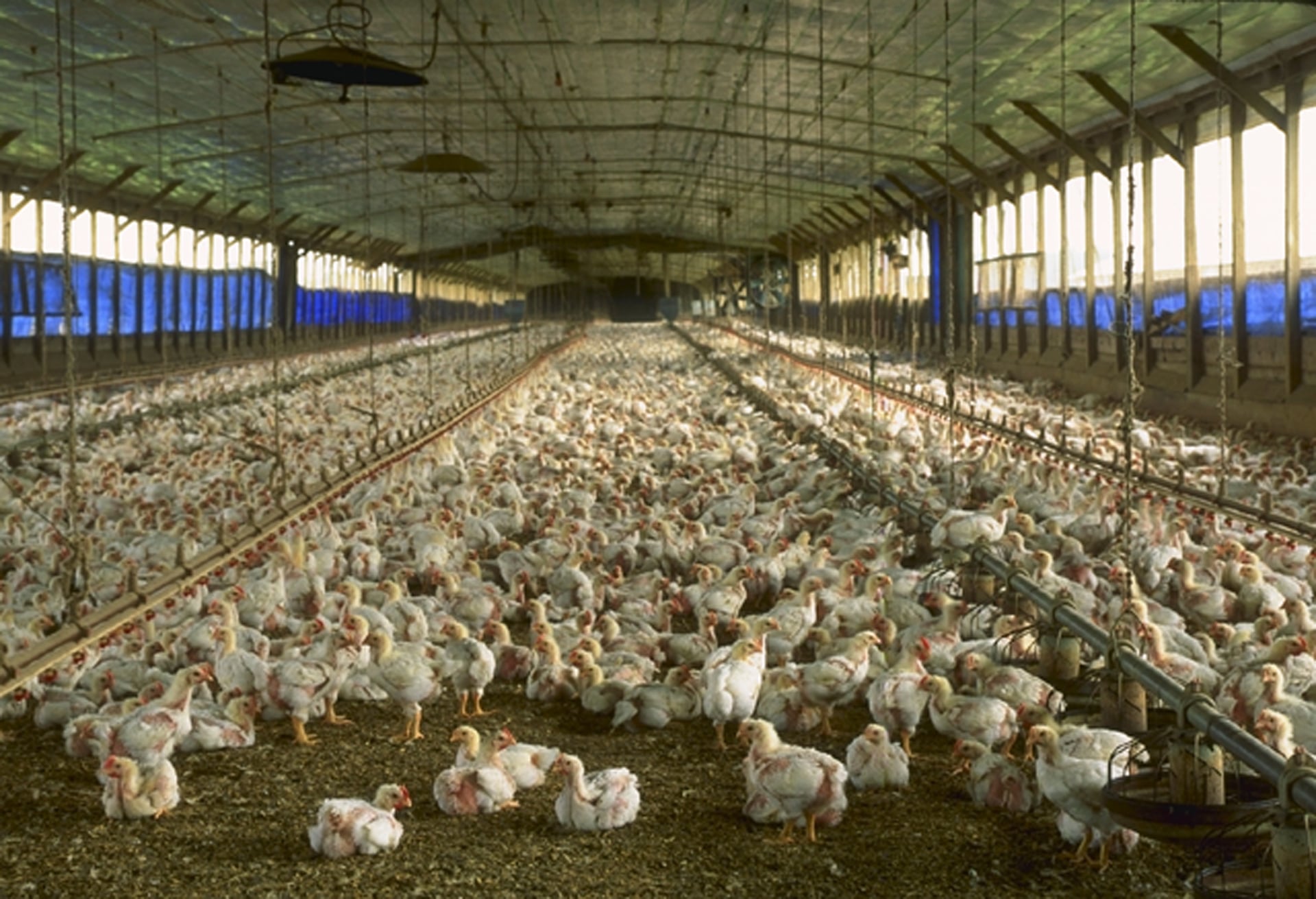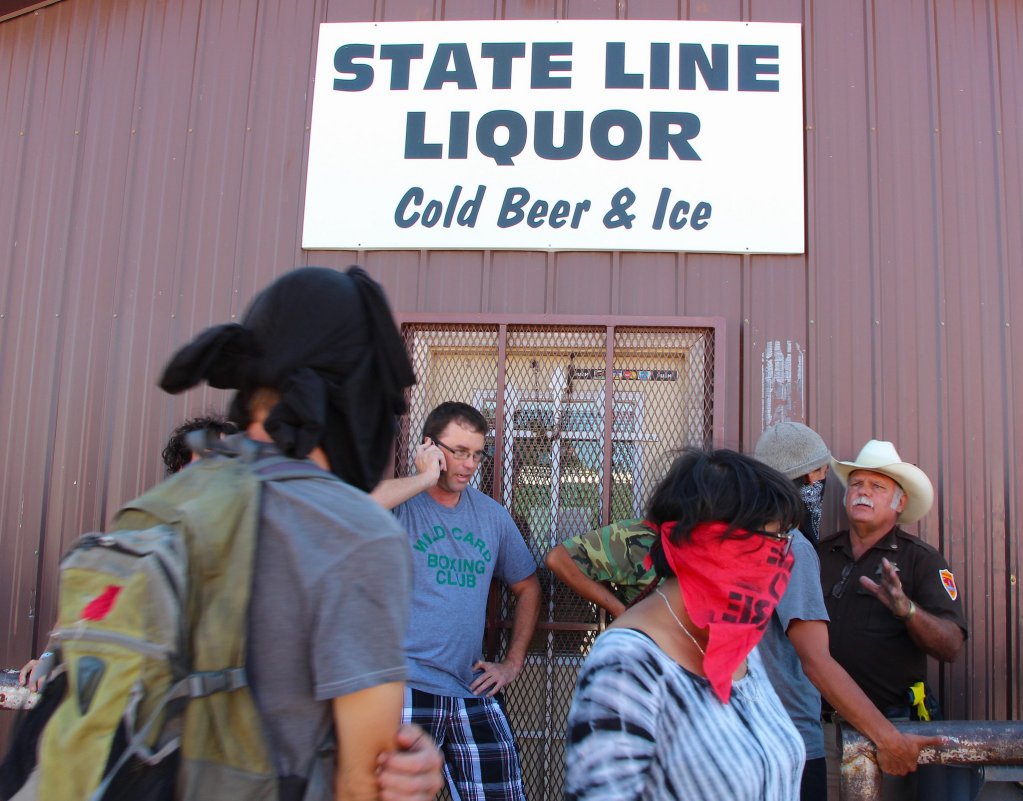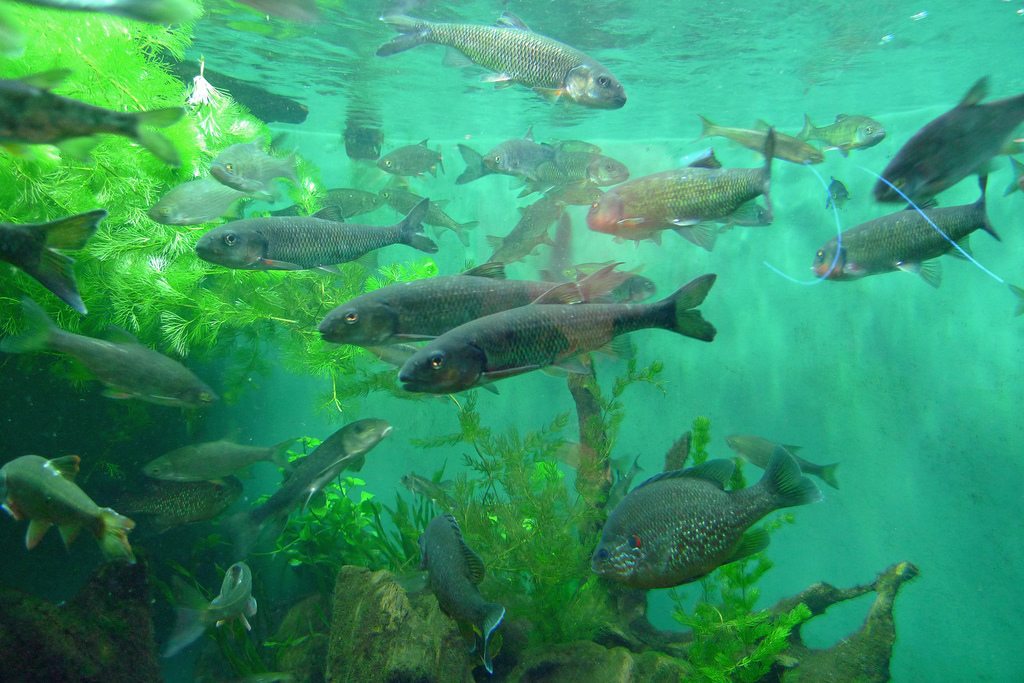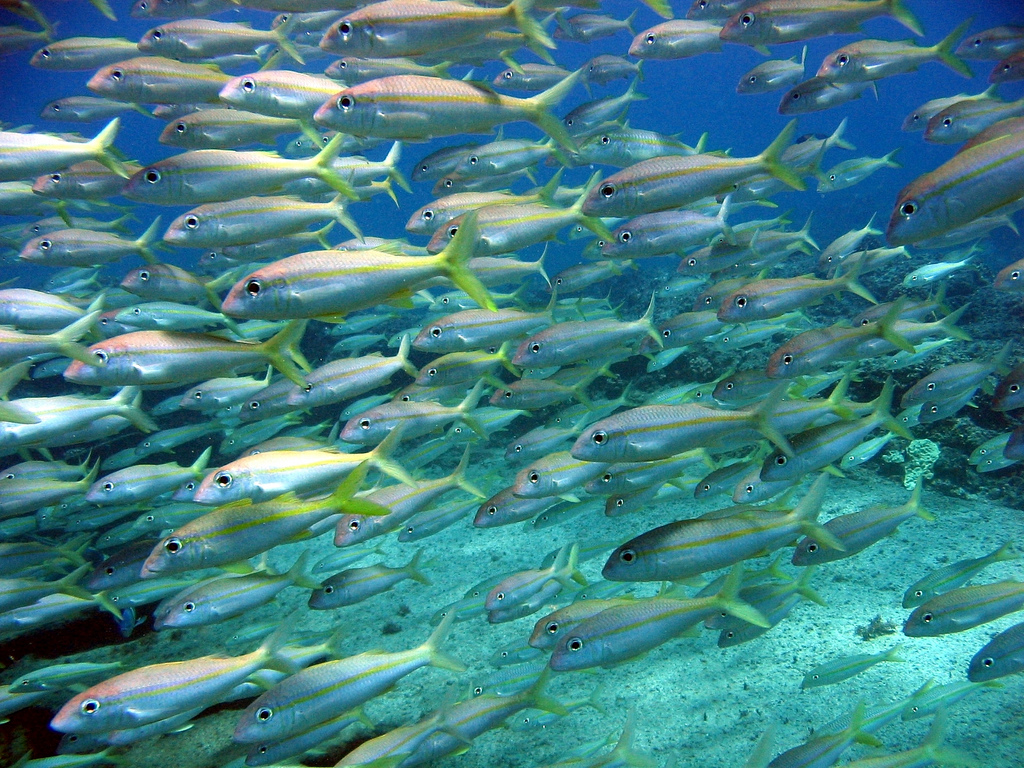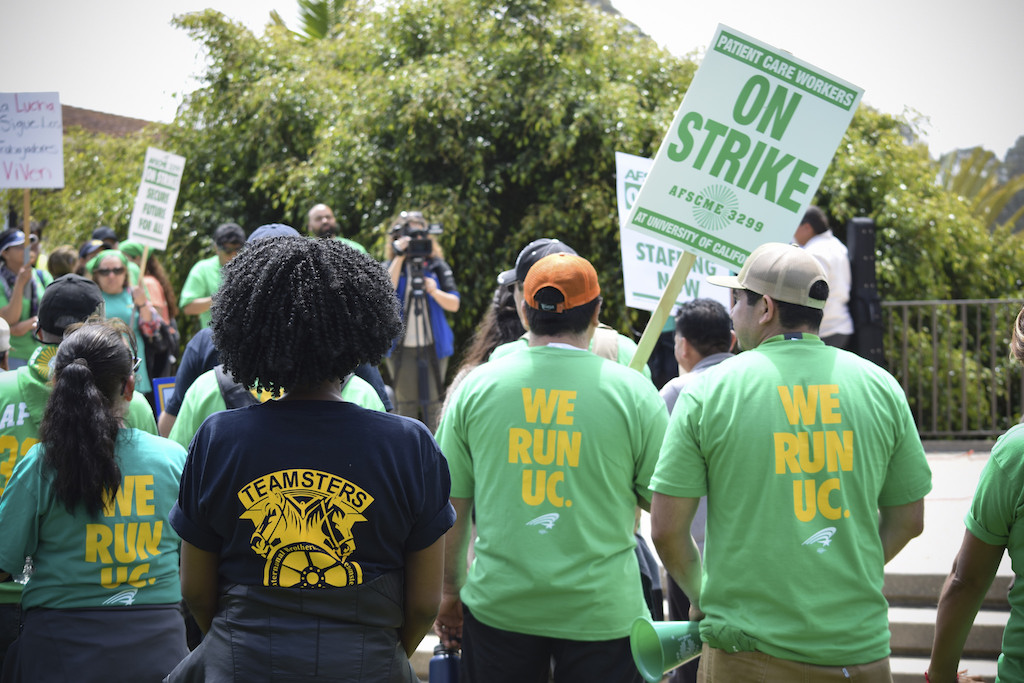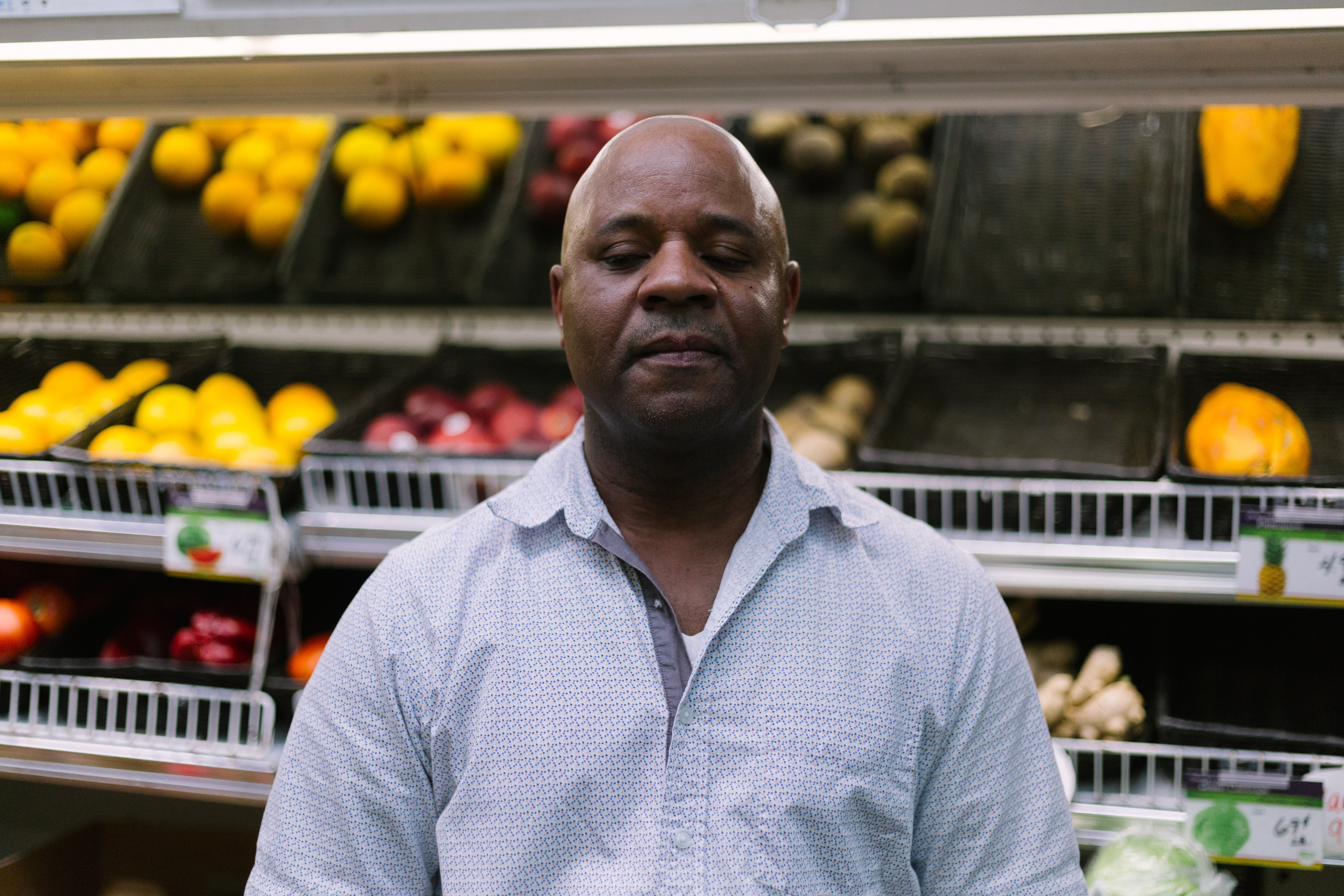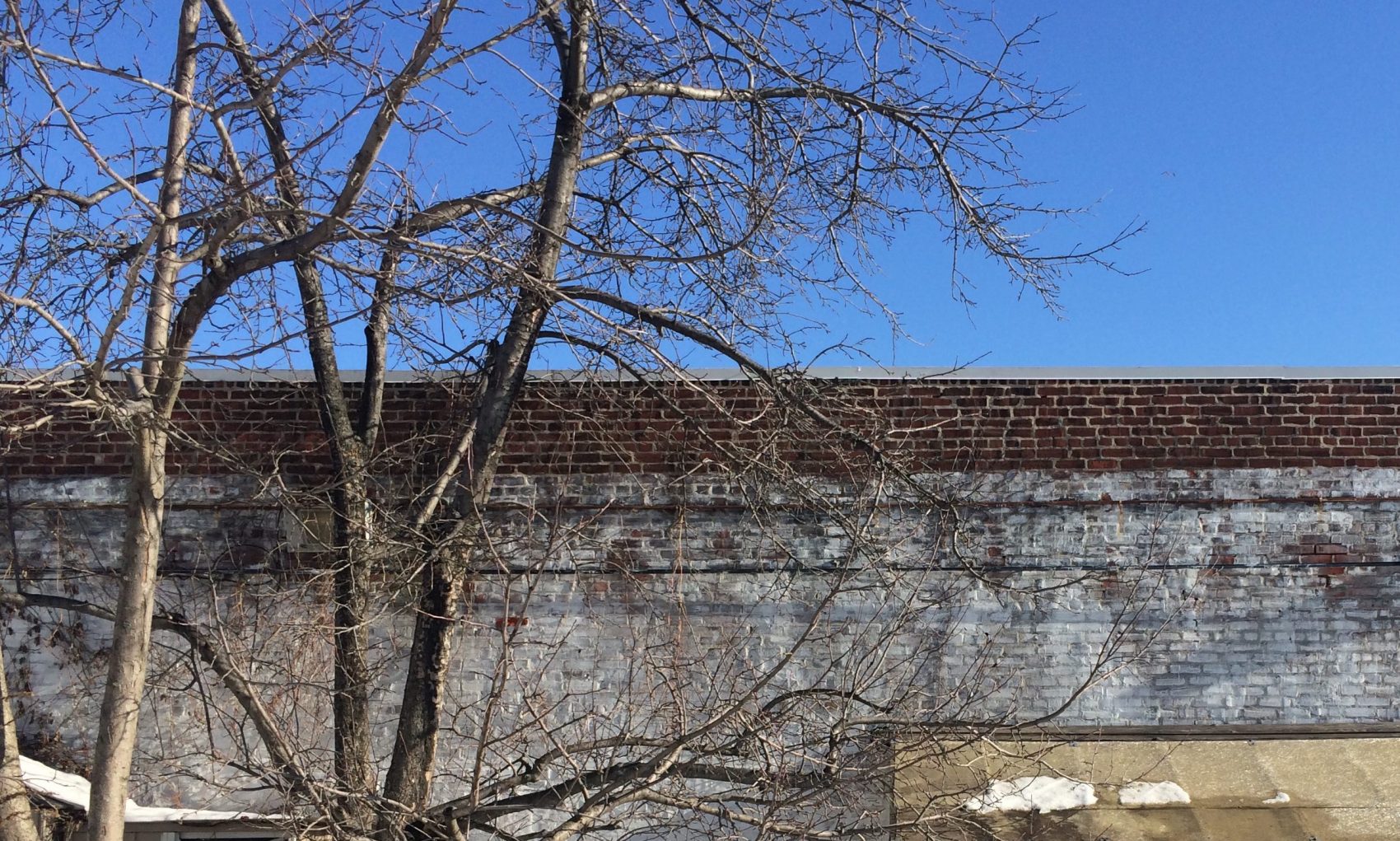
Thomas Parry
A few blocks from my apartment in West Philadelphia, a community orchard is toughing out the winter beneath a crust of snow. It’s situated on a 40-by-60-foot lot behind an iron stockade fence. On the warehouse wall along the orchard’s east side, its founders—local children who had raised money to buy the land title—are honored with mural portraits. Orchard member Owen Taylor opens the gate and shows me around. A red currant bush huddles by the fence. A grape vine crosses the back wall
Phil Forsyth, executive director of the Philadelphia Orchard Project (POP)—an organization that manages 52 similar orchards in the city—arrives in his pickup, driving tail first down a block of icy ruts.
He says hello and strides to a young fig tree. Taylor had bundled it up for the winter, but the wind has exposed the slender limbs snow has piled up in the tree’s interior. Forsyth snaps a twig. “See that?”
A vibrant green ring lives beneath the bark. The fig’s going to be fine.
POP began in 2007, when Paul Glover planted himself in downtown Philadelphia with a large, yellow placard raised into the air. Philly Orchard Project, it proclaimed. Planting fruit and nut trees in vacant lots.
Philadelphia’s population has declined by 400,000 people since 1970, scattering neglected land all throughout the city. Philly counts forty-thousand vacant lots within its borders, an area the size of the entire downtown district. Glover’s idea was to plant that deserted, under-used land with trees to provide communities with years of wholesome food.
“One tree can produce one hundred pounds of fruit,” Glover would say to anyone who would stop to talk.
But who would want to pay for an orchard project—for real estate and trees, not to mention payroll for planting, pruning, and harvest, all to grow freely-available food for the poor? It couldn’t possibly be profitable.
But Glover, an urban ecologist and lifelong activist, wasn’t really interested in profits. As it turns out, that simplified things immensely.
His placard campaign netted 500 e-mail addresses. The Project emerged from that pool–and, since then, has planted more than 1,000 fruit trees and 2,000 fruit-bearing bushes, shrubs, and vines in 53 urban orchards across the city. POP has repurposed acres of blight and expanded into parks, church grounds, and schoolyards, producing thousands of pounds of fresh, delicious, organic-standard fruit for the neighborhoods that need it.
The Philadelphia Orchard Project currently maintains 53 urban orchards throughout the city.
Urban permaculture
POP owns no orchards and sells no harvest. Instead, it provides support and training—and sometimes free trees and shrubs—to churches, schools, youth groups, block associations, and other community groups that want to get involved. To be selected, an organization has to demonstrate long-term legal access to a site with adequate sunlight and water; the soil is tested for suitability. Finally, the group has to demonstrate it has a plan to get fruit to those in need.
POP follows the principles of permaculture, creating a multilayered “edible forest” that mimics natural diversity with:
- a canopy of large trees, like cherry
- a lower layer of dwarf trees such as apple, pear, fig, or pawpaw
- shrubs with hazelnuts, currants, and berries
- an understory of perennials—chives or rhubarb, for example—sharing the soil with surface growers such as strawberry
- vine fruits such as grapes clinging to trellises and fences.
With each ecological niche filled, there’s little opportunity for weeds. Fruit diversity also takes the pressure off of individual species—if one crop fails, the orchard will still produce. At the same time, some of the less-familiar trees planted, including pawpaw, are much more resistant to pests and diseases than apples or peaches.
Of course, two-legged pests occasionally cause problems. “Once, right after planting in an orchard in North Philly,” Forsyth says, “someone dug up all the trees and sold them on the corner.” But simple fences seem to be sufficient deterrents in most cases. As for people helping themselves to fruit, each community orchard decides its own policy, but POP itself doesn’t frown upon passersby helping themselves.
“The hungry should eat,” Glover says.
The harvest
For an organization focused on feeding people, POP displays a surprising lack of concern with the harvest. That part’s really up to the community groups. At present, one-third of the fruit from POP orchards is “free harvested”—neighbors may help themselves to whatever is ripe. A quarter of the fruit gets delivered to hungry neighbors and food banks. Twenty percent is sold through farmer’s markets and CSAs, and the profits funnel back into the orchard or another community project.
No one is entirely sure how much fruit POP projects currently grow. Though partners recount high yields—48 pounds of peaches in a week, 127 pounds of mint in a season—the numbers aren’t formally tracked. One thing POP is fairly sure of, though, is that productivity increases over time. An orchard can take five years to reach full fruit-bearing maturity.
In the meantime, the plantings provide plenty of other benefits. Fruit trees suck in carbon and cut food miles. Their roots reduce storm water runoff. And each orchard seeds its neighborhood with knowledge that spreads and deepens perennially as individuals learn to plant, grow and harvest their own food.
Forsyth lays it out: “We think of orchards as multi-functional urban infrastructure.” Urban decline reverses an acre at a time. A vacant lot transforms from a sign of loss to a source of life.
“It’s all part of a larger effort to set the scales right on the metropolitan ecology,” Glover says, “to convert cities from open sores upon the planet to beautiful blooms.”
Pruning at the Pentridge Children’s Garden
In late winter, it’s time to prune.
“When you prune a fruit tree, your first priority is to get rid of the dead and diseased limbs,” Forsyth tells me. “Then you cut to prevent competition, crowding and crossing. The three C’s.”
“Think of photosynthesis,” he says. “The fruit will grow where the sunlight hits. If you don’t prune, all the fruit will grow at the top where no one can get it. So, we need to open the tree up to spread sunlight and air evenly.”
Before long the ground is littered with branch ends and Forsyth has moved up into the trees. I’ll learn later that he used to study anthropology and literature, but dropped out of college while studying abroad in Paris. He spent the remainder of the year the city’s many gardens, remembering his childhood in Providence and the food his family grew in their tight, urban backyard. He came home, studied horticulture and in 2008 took up the mantle of POP’s orchard director, committed to the vision of an orchard in every neighborhood.
In the next few months, Forsyth will visit each of POP’s 53 orchards with shears and saw, ready to lop branches. From a ladder at the top of the tree, he calls down, “I prune trees in my dreams.”
Pruning is a handy analogy for POP’s larger approach: let the city’s underserved communities bear fruit as the sun shines and the city emerges from a long post-industrial winter.
Before I leave, Taylor leads me to a ring of cinderblocks, lifts a transparent sheet of plastic, and reveals a woody sprig just a few inches tall. It’s an olive tree, in its second year of growth, many years from a destiny no one can quite predict at the moment.
The tiny tree bears the secret to POP’s success. No commercial venture could afford to wait for this tree. But POP is rich in patience.
Meanwhile at the apple trees, pruning continues. After an hour or so with the shears and saws, creating maximum light and air for the apple trees’ branches, Taylor and Forsyth peel off their winter coats and insulated coveralls. Spring’s heat is coming.







